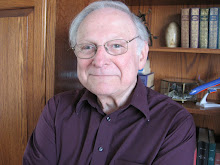Bobsleddding (or bobsleighing) is a winter sport in which teams of two or sometimes four foolhardy individuals, for reasons best known to themselves, try to see who can slide fastest on a gravity-powered contraption down a narrow, twisting ice track. Don’t ask me why, but they delight in reaching speeds in excess of 90 miles per hour. If you’ve been watching the Olympic games, you’ve probably seen enough of the sport to make you long for a leisurely ride in a one-horse open sleigh. But why is the thing called a bobsled?
Was there an early champion of the sport named Bob? No, that was a man named Caspar—Caspar Badrutt—who owned a hotel in St. Moritz and built the first half-pipe track for racing the sleds around 1870. That track has hosted two Olympics and is still in use today.
Dictionaries are a little skittish about asserting the origin of bobsled. Webster’s New International (Second Edition) uncharacteristically offers no explanation at all with its perfunctory definition of “a short sled, mostly used as one of a pair.” Webster’s Collegiate says the word dates from 1837 and hesitantly suggests, with specious logic, that it might have something to do with the kind of bob that means a “bunch or a cluster.” The Oxford English Dictionary cites its earliest print appearance in 1848 in John Bartlett’s Dictionary of Americanisms, which regards the device as a means of carrying logs over frozen snow.
Some misguided etymologists say the name comes from the tendency of teams to “bob” their heads and bodies back and forth to gain speed. There are two problems with this explanation. First, any movement by the riders slows down the sled, rather than increasing its speed. And second, the word bobsled predates the sport of bobsled-racing by several decades.
A website called Podictionary.com speculates that the word comes from the design of the log-carrier in two sections, with a set of runners in the front section that had been “bobbed,” or cut short, and a longer set of runners in the rear section. The reason for this design was to stabilize the sled when crossing rough terrain and prevent the logs from falling off.
And Bob’s your uncle! That phrase, a British term meaning “and there you have it” or “it’s as easy as pie,” calls for its own bobology, which is even more elusive than bobsled. As good as any is the suggestion that it refers to Lord Frederick Roberts, a respected nineteenth-century general known affectionately by his men as “Uncle Bobs,” and the phrase originally meant all would be well under his command.
The Bob of Buffalo Bayou came bob, bob, bobbin’ along with this ode to the Olympians.
Dashing down the chute
In an old two-man bobsleigh,
O’er the ice we scoot,
Racing all the way.
We better win the gold,
Or silver anyway,
Why else would we get freezing cold
Atop this stupid sleigh?

I never had an Uncle Bob, nor will I ever be one.
ReplyDeleteNor rode in a sleigh, or even a shay,
Pulled by a horse named Dobbin.
And thread on a bobbin and the gait of a robin
Are the only "bobbins"I've known.